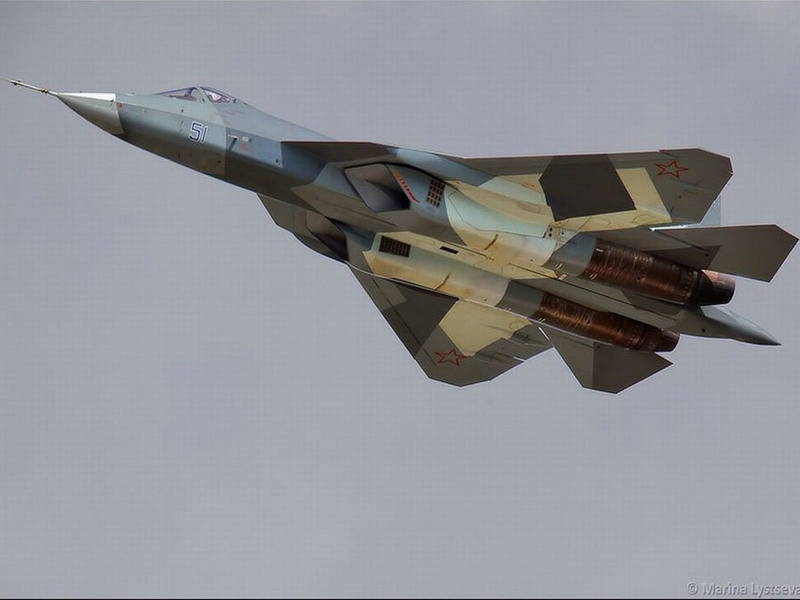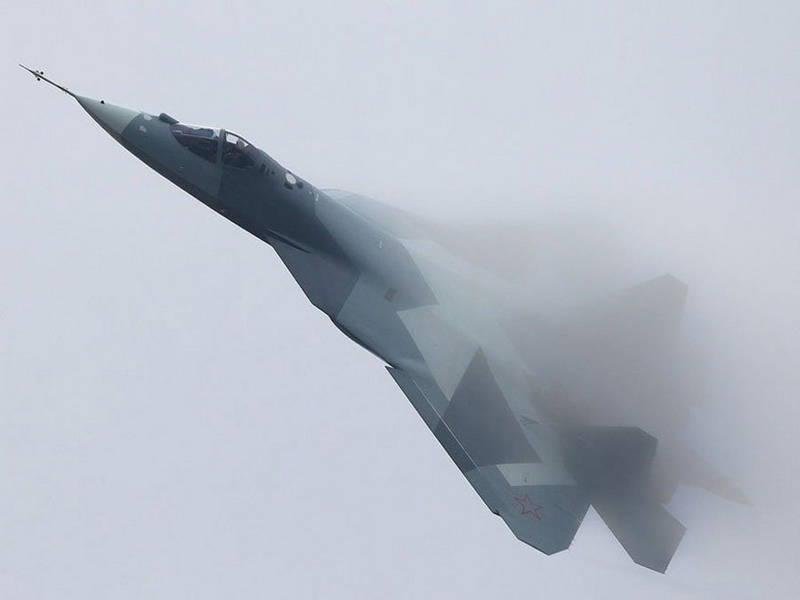Business Insider: Russian fighter T-50 can not compete with the American F-35

First of all, the authors of the article in Business Insider noted that the three latest fighter projects - the American F-35, the Russian T-50 and the Chinese J-20 - are the main driving force for progress in the field aviation and they will pave the way for combat aircraft in the XNUMXst century. Nevertheless, the Chinese aircraft is not taken into account in further comparisons; it was only an example to describe the existing situation.
The fifth-generation Russian fighter T-50, in addition to the Russian Air Force, will be supplied to countries that have good relations with Russia. In addition, the buyers of this aircraft can become states that are looking for alternatives to the American F-35. The expectation of the American fighter was noticeably delayed, which is why some countries are beginning to study alternative proposals. Lee and Johnson are reminded of the 2011 estimates of the year, according to which more than X-NUMX T-1000 fighters can be built and transferred to customers.
The authors of the article, referring to foreign experts, argue that the countries-buyers of Russian aircraft while it is not necessary to train pilots, since the supply of equipment to foreign customers can take several decades. According to the Russian World Trade Analysis Center weapons, referenced by E. Lee and R. Johnson, deliveries of T-50 aircraft may continue until the end of the thirties. For example, Malaysia, having signed the contract, will receive the first fighters of the fifth generation not earlier than 2035 of the year.
The material touches upon the issues of further development of front-line aviation. The authors of the article note that American experts who doubt the feasibility of developing unmanned fighter aircraft are not alone in their opinion. Many specialists from Russia also do not believe that the further development of aviation should proceed only along the path of creating unmanned systems. An alternative to this could be the development of onboard electronic equipment of existing aircraft.

Turning to a comparison of aircraft, E. Lee and R. Johnson recalled that in recent years, the global aviation industry is working on the creation of fifth-generation fighter jets. To date, only American F-22 aircraft have been commissioned, but in the coming years, the Russian T-50 should replenish the list of fifth-generation fighter aircraft. The authors note that the use of two engines makes the Russian car somewhat similar to the American F-22.
The authors of the publication, as is clear from its name, compared the T-50 with F-35. However, they did so with the appropriate reservation, noting that Russian aircraft manufacturers prefer to compare their new fighter with the older F-22, with which it must compete, although it is the F-35 that is the future of the US Air Force and its allies.
The first parameter by which the planes of the two countries were compared was visibility for radar systems. E. Lee and R. Johnson point out that Russian designers, when developing the T-50, preferred low-profile maneuverability. In this regard, the American F-35 fighter has more chances to go unnoticed in the area of the combat mission.
The fifth-generation Russian fighter T-50 has a speed advantage over the American F-35. According to the data of the authors of Business Insider, the T-50 is capable of a top speed of up to 1300 miles per hour, F-35 - up to 1200 miles per hour. At the same time, it is noted that the American aircraft carrying the payload in the internal fuselage compartments (there are the same compartments on the Russian T-50) is capable of dropping missiles and bombs even when flying at supersonic speeds.
Both compared aircraft will be able to hit not only air, but also ground targets. They will be able to approach targets at a distance of attack, overcoming the enemy's air defense. However, according to E. Lee and R. Johnson, the F-35 fighter has a higher potential for attacking ground targets. T-50, in turn, has the best ability to combat enemy aircraft.

T-50 is considered a good platform for various weapons needed to perform different combat missions. The authors of the F-35 project abandoned the idea of a universal aircraft and developed three fighter versions adapted to the conditions in which they will have to work in the future.
Russian aircraft manufacturers with the T-50 project intend to win a significant share of the world market for fifth-generation fighter jets. According to the authors of the publication Business Insider, the company "Sukhoi" is going to occupy a third of the world market. However, the T-50 project is not yet ready to build serial equipment, and the American competitors, represented by Lockheed Martin, have already signed several contracts for the supply of their F-35 aircraft.
The fifth-generation Russian fighter has high flight and take-off and landing characteristics. For takeoff, he needs no more than 300 meters of runway. As part of the F-35 project, the F-35B fighter was created for the United States Marine Corps and the United Kingdom Navy. This aircraft is equipped with an original power plant with a rotating engine nozzle and a lifting turbine, thanks to which it can perform a shortened or even vertical (under certain restrictions) takeoff.
Finally, the authors of the publication “The New Russian Fighter T-50 still cannot compete with the F-35” pay attention to the state of the two projects. The Russian fighter T-50 is currently undergoing tests. This year the project will enter the so-called. evaluation phase. Working within the framework of the F-35 project, American specialists are already training pilots who will fly the newest fighters of all three modifications in the future.
Based on these comparisons, E. Lee and R. Johnson conclude in the title of their article. Some of the comments of the authors of the publication are based on obvious facts, while others are an attempt to analyze the available information. Nevertheless, American journalists come to a disappointing conclusion for Russian aircraft manufacturers: T-50 cannot yet compete with F-35. To agree or not with this conclusion, which appeared as a result of another comparison of military equipment, is a personal matter of the reader.
Based on:
http://businessinsider.com/sukhoi-t-50-cant-compete-with-the-f-35-2014-6
Information